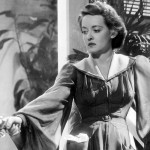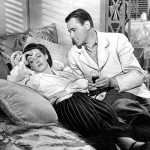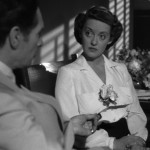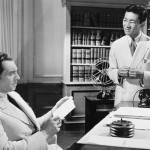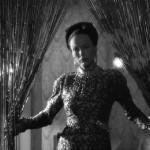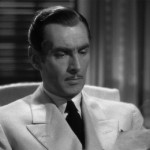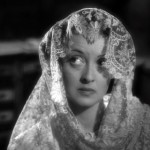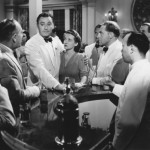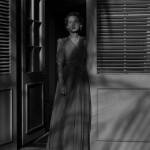
The Letter – 1940
I went into this film knowing very little about it. I knew that it starred Bette Davis, but that was about it. But I made the mistake, or so I thought, of logging-on to Wikipedia to read the production notes. What caught my attention instead was a picture of Bette Davis pointing a gun at a man who appeared to be dead on the ground. Aaargh! I just spoiled the plot for myself. Davis’s character was obviously a murderess! But as luck would have it, that picture gave away absolutely nothing because it was a still from the first minute of the movie. Nothing about the plot was given away prematurely.
The film starts off as Leslie Crosby, played by Davis, shoots and kills a man on the front porch of her house somewhere in the tropics. Not only does she murder him in full sight of several witnesses, she empties the gun and continues trying to fire after the tell-tail click can be heard.
The story followed Leslie as she is interrogated by the police, arrested, and made to stand trial. The question wasn’t whether or not she killed the man, but whether or not the shooting was pre-meditated.
Leslie’s initial story had been that the victim, Geoff Hammond, had tried to rape her and that she had killed him in self-defense. Her adoring husband Robert, excellently played by Herbert Marshall, believed her innocence without question or doubt. At first, so did the police, but the mysterious appearance of a letter, written from Leslie to Hammond on the night of the murder, changed everything.
The film’s director, William Wyler, did a fine job of making the audience doubt her story as well. However, I had my doubts even before the arrival of the letter. There was one thing about her story that didn’t hold water for me, and I understand that I could only make this argument as an outside observer. Her story was that they had struggled as he tried to force himself on her. But when she had initially been shown shooting Hammond, her hair was perfectly in place and her loose robe wasn’t even the slightest bit disheveled. If they had struggled as Leslie had claimed, she would have been rumpled.
But what gave away her true motivations were the contents of the letter and the identity of the letter’s owner. That woman was Mrs. Hammond, the deceased man’s widow, played by Gale Sondergaard. Portrayed as a dangerous dragon-lady, complete with dark and ominous music whenever she appeared on the screen, she was the one who had possession of the letter which was an invitation for Hammond to come to Leslie. You see, the two had been having an affair which Hammond was trying to end.
The plot was actually an engaging one and it kept my interest quite easily. The lengths to which Leslie and her attorney, Howard Joyce, played by James Stephenson, go to in order to obtain the letter from Mrs. Hammond, the trial, and Leslie’s inevitable downfall were all believable and satisfying to watch.
Keep in mind, though, that this movie came out in 1940. The Production Code Administration was still in control of American-made films. According to them, a woman who committed adultery and/or murdered anyone in a film could not go unpunished. Apparently the original draft of the script had Leslie getting away with her crime of passion. However, the PCA rejected the screenplay and refused to allow the movie to be made until a new ending was written in which Leslie is killed, thus punishing her. Another little change that I found interesting was that Mrs. Hammond, Leslie’s eventual murderer, was originally Hammond’s Chinese mistress. However, the Hayes Office had the character changed to Hammond’s Eurasian wife. Never-mind the fact that the film ironically ended with a murderess going unpunished.
Davis played her part well enough, though her performance was nothing to write home about. The actor that really caught my attention was Herbert Marshall. He played his part with some real depth and believable pathos, especially in the end when the truth about his wife is revealed to him. Add to that the plot point that all his life savings were gone because they were used to purchase and bury the incriminating letter before the trial, and you not only have a weighty character, but an interesting plot as well.
